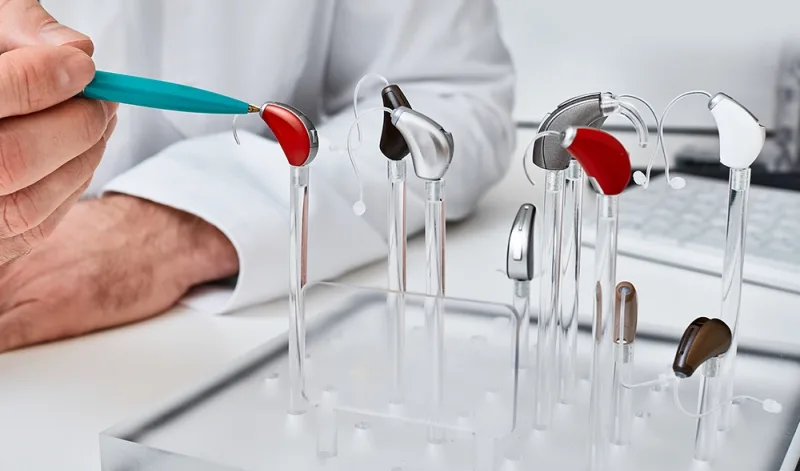Although there are many different sorts of hearing aid device, the actual way in which sound is amplified and processed can either be Analogue or Digital.
Analogue and digital hearing aids may look very similar but the way they process sounds is different, understanding the difference between the two can help you to the next stage of choosing a device that suits your needs.
Analogue Hearing Aids
These devices have been in usage a lot longer than digital devices and they operate by simply amplifying the signal that is received by the microphone and relying it to the ear via the loudspeaker. Amplification can be adjusted to suit then type of hearing loss but they are generally not that flexible. The sound is increased by adjusting the volume control
Generally these are cheaper devices and many people feel more familiar with them as they have been around for a long time, some do have a tendency to feedback and whistle. The settings are easier to adjust and a trained fitter may be able to making adjustments “in situ” without having the send the unit back to the factory.
Digital Hearing Aids
These devices are more modern and have an increased degree of sophistication; it is possible to program aids, to suit a particular type of hearing loss. They work by taking a sound and processing it in a digital format and then converting it back to an analogue sound which can be heard. These aids will reduce background noise and can help with listening in different environments making for a more pleasant experience.
Entry level devices may not be much better than their analogue counter parts but higher end models should come with multi channels and memories that can be set to suit different sound situations such as; at home, talking on the telephone, watching television, in crowded places. Words of caution, these devices are complex instruments, obtaining the best sound quality often comes down to the experience of the fitter who sets up the memories for you. If you do choose a digital aid, try to use the services of a fitter with a decent amount of fitting experience for the type of device you are purchasing.
Hearing Aid Definitions
Digital – of signals (or data) expressed as series of the digits 0 and 1, typically represented by values of a physical quantity such as voltage or magnetic polarization.
Analogue – relating to or using signals or information represented by a continuously variable physical quantity such as spatial position, voltage, etc.
We understand both Analogue and Digital devices are available on the NHS or can be purchased privately.
Information on hearing aids from the National Health Service.
Hearing Aid Insurance from Assetsure – Worldwide All Risks including physical loss or damage.


























